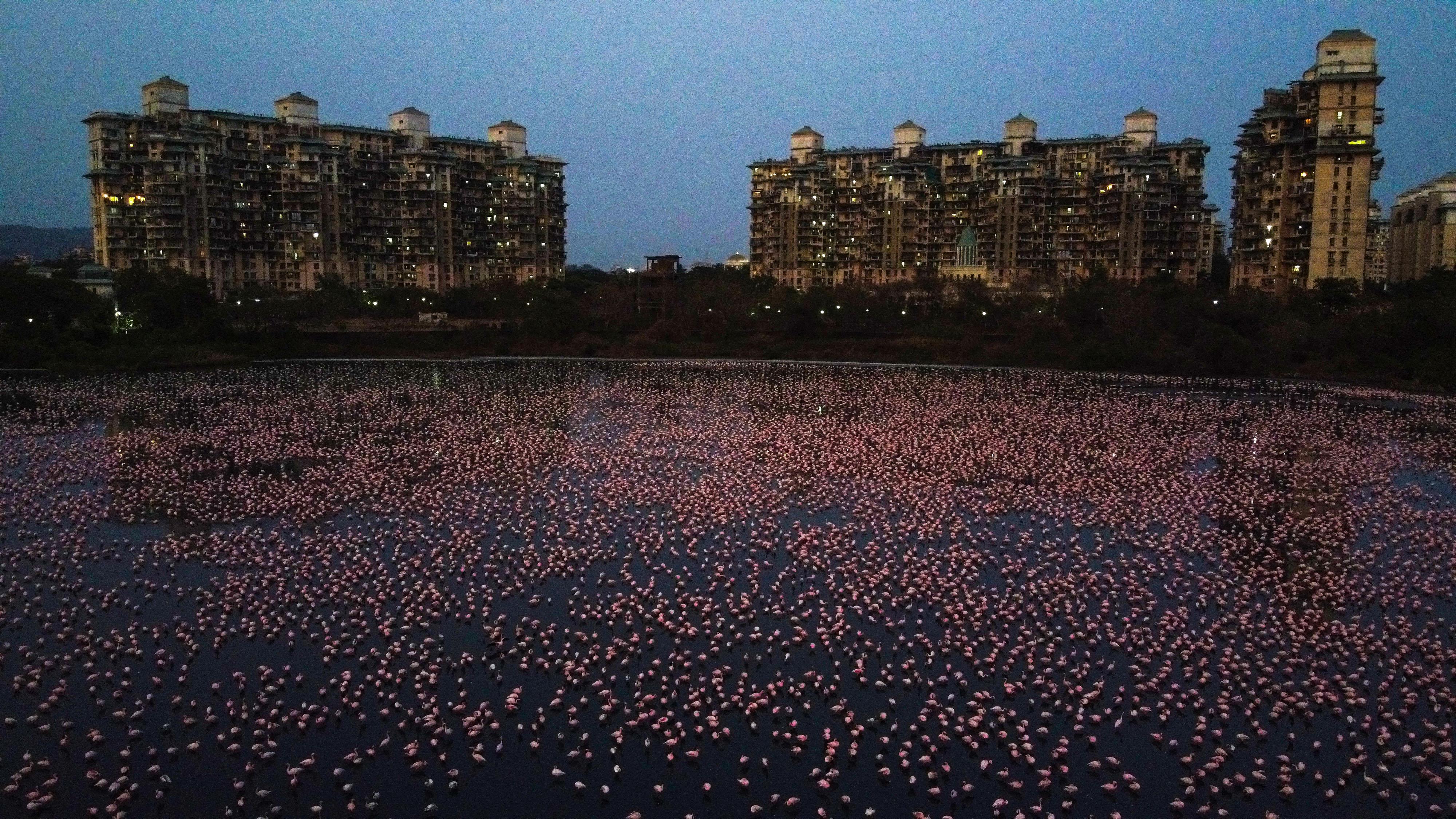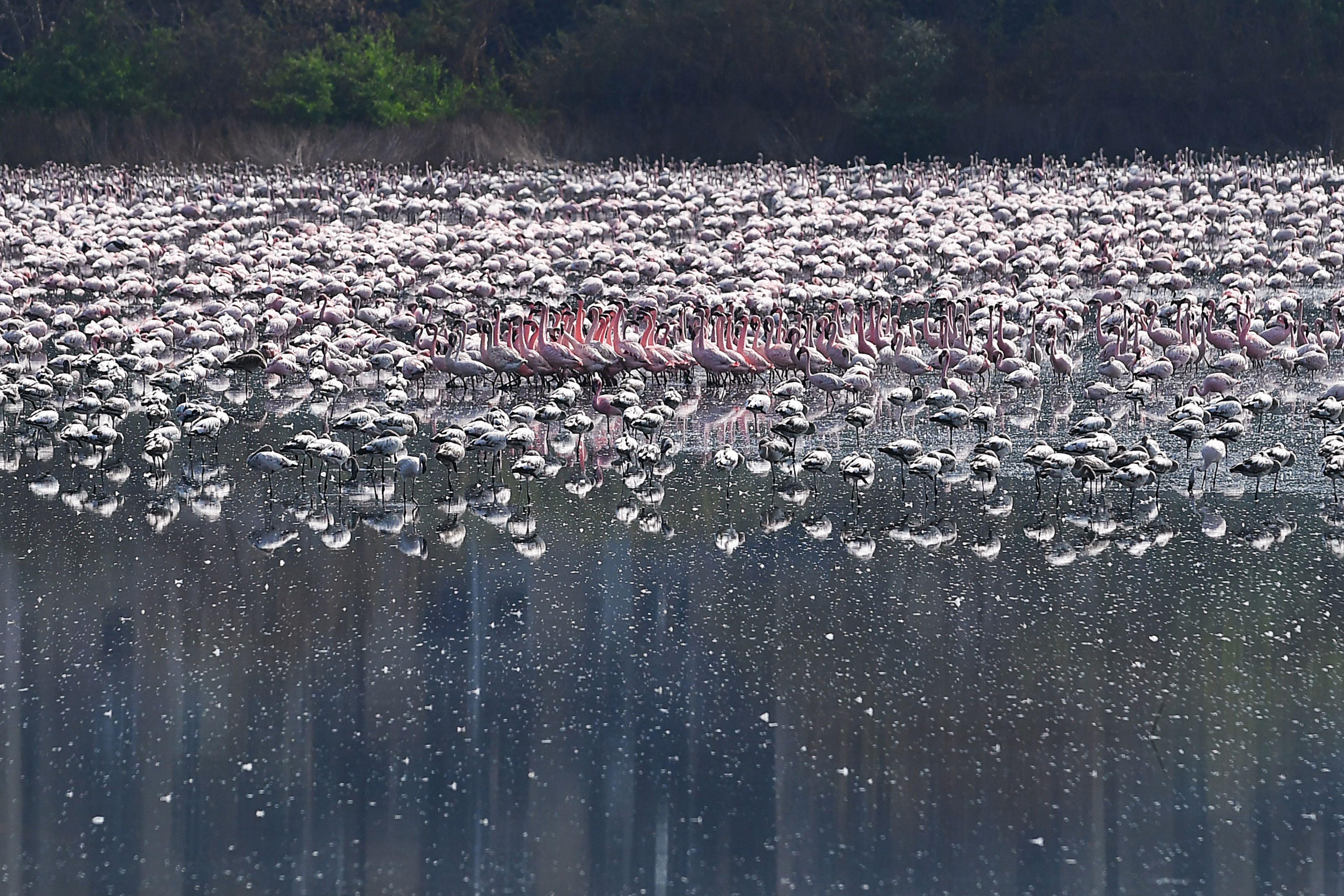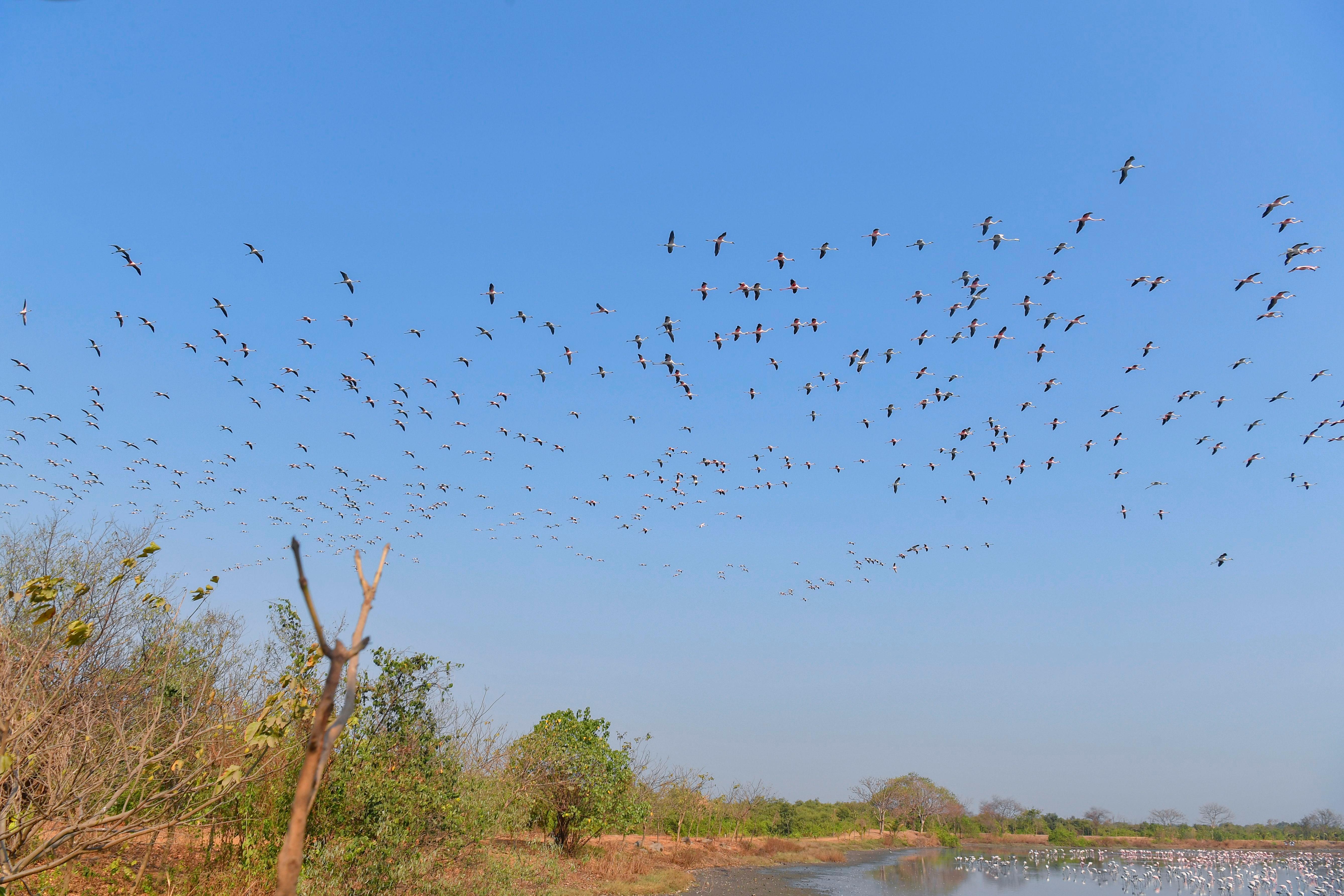Flamingos Turn Mumbai Pink as Population Booms During Lockdown
Updated April 30 2020, 10:18 a.m. ET

Global coronavirus lockdowns have had some pretty incredible side effects on the environment. Lions at a national park in South Africa are napping on roads, bears are taking over Yosemite National Park, and sea turtles are hatching on Brazil's empty beaches.
And now, flamingos are reportedly turning the city of Mumbai in India pink as their population levels explode amid a nation-wide lockdown. On 24 March, Prime Minister Narendra Modi ordered a nationwide lockdown for 21 days, limiting the movements of 1.3 billion people.

The lockdown happens to coincide with the migration of thousands of flamingos to Mumbai, which has occurred since the 1980s. Between October and March every year, the birds will migrate to wetlands surrounding Mumbai to forage for food, and this year, residents have reported an increase in the number of animals after they migrated later than usual.

The Bombay Natural History Society (BNHS) estimates an increase of 25% in the number of flamingos migrating to the city compared to last year, according to the Hindustan Times. The BNHS claims that lower human activity has created ideal conditions for foraging. The areas are usually full of construction work and traffic, but the lockdown has brought that to a stop.
“A major reason for the large numbers is also the large flocks of juveniles moving to these sites, following the successful breeding documented two years ago. Additionally, the lockdown is giving these birds peace for roosting, no disturbance in their attempt to obtain food, and overall encouraging habitat,” Deepak Apte director of the BNHS told the publication.

“Wetland destruction and developmental activities across several areas of the eastern seafront is another reason why larger bird numbers are getting squeezed into smaller pockets like in Navi Mumbai.”
While researchers were unable to travel to the area to count the birds, they were able to estimate the number of animals by using photographs. BNHS estimates that there were more than 150,000 flamingos in the first week of April. In 2019, the highest number recorded as 121,000.
“We are witnessing an overall increase in flamingo population in the range of 23-25% since 2019. An accurate count will be taken once the lockdown is called off,” Apte added.
Rahul Khot, assistant director of the BNHS, who leads the flamingo studies, said:

“Flamingos usually visit MMR wetlands from November to May, mostly for feeding purposes from the Gujarat region, which is their breeding area. Migration starts after monsoon, when water-filled regions start drying up. However, owing to good availability of water last year through winter, arrivals this year were delayed.”
"While there is a decline in industrial waste during the lockdown, the influx of domestic sewage is helping the undisturbed formation of planktons, algae and microbenthos formation, which forms the food for flamingos and other wetland birds.”
A local resident, Sunil Agarwa, added:

“Residents are cooped up at home spending their mornings and evenings at their balconies taking photographs and videos of these relaxed birds. The lockdown will at least prompt people to focus on what is around them, which they had been taking for granted, and hopefully this site will be declared a flamingo sanctuary soon.”
The best way to prevent contracting or spreading coronavirus is with thorough hand washing and social distancing. If you feel you may be experiencing symptoms of coronavirus, which include persistent cough (usually dry), fever, shortness of breath, and fatigue, please call your doctor before going to get tested. For comprehensive resources and updates, visit the CDC website. If you are experiencing anxiety about the virus, seek out mental health support from your provider or visit NAMI.org.